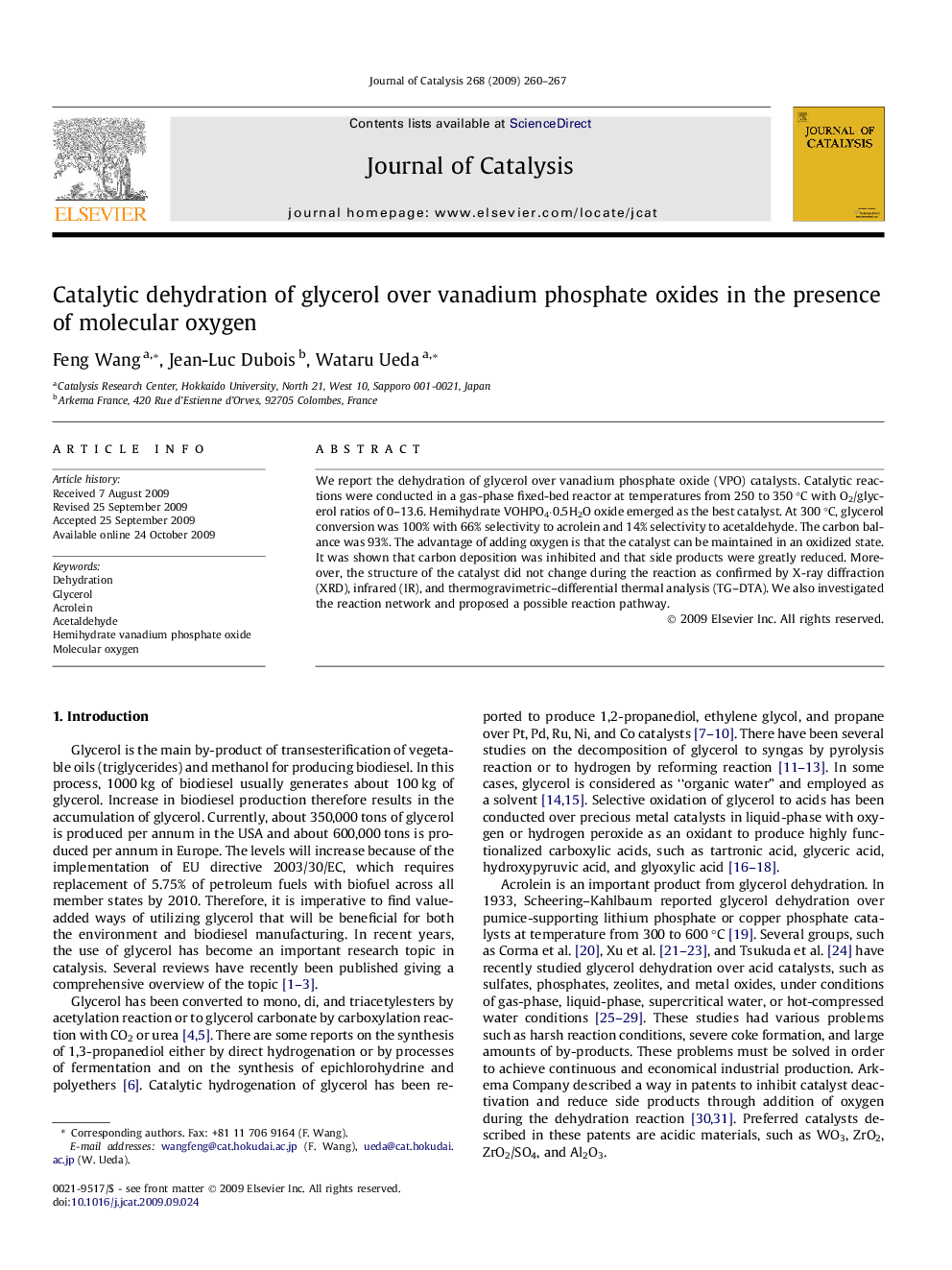| Article ID | Journal | Published Year | Pages | File Type |
|---|---|---|---|---|
| 61967 | Journal of Catalysis | 2009 | 8 Pages |
We report the dehydration of glycerol over vanadium phosphate oxide (VPO) catalysts. Catalytic reactions were conducted in a gas-phase fixed-bed reactor at temperatures from 250 to 350 °C with O2/glycerol ratios of 0–13.6. Hemihydrate VOHPO4·0.5H2O oxide emerged as the best catalyst. At 300 °C, glycerol conversion was 100% with 66% selectivity to acrolein and 14% selectivity to acetaldehyde. The carbon balance was 93%. The advantage of adding oxygen is that the catalyst can be maintained in an oxidized state. It was shown that carbon deposition was inhibited and that side products were greatly reduced. Moreover, the structure of the catalyst did not change during the reaction as confirmed by X-ray diffraction (XRD), infrared (IR), and thermogravimetric–differential thermal analysis (TG–DTA). We also investigated the reaction network and proposed a possible reaction pathway.
Graphical abstractCatalysts of vanadium phosphate oxides were studied in glycerol dehydration to acrolein in the temperature range of 250–350 °C with an O2/glycerol ratio of 0–13.6.Figure optionsDownload full-size imageDownload high-quality image (146 K)Download as PowerPoint slide
